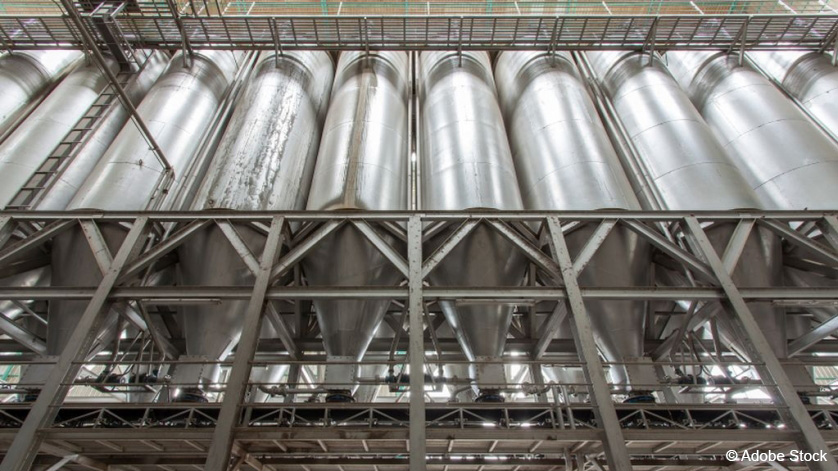
In the pharmaceutical, building materials and food industries, on vessels and silos, on platforms and dosing systems, right up to kitchen and bathroom scales – weight is measured everywhere. In industry, it becomes particularly interesting when it comes to the level in vessels. There are various possibilities for weight measurement or weighing. The filling level can be determined optically, hydrostatically, by ultrasound, microwaves and radar, mechanically, capacitively, by heat dissipation, by displacement and resistance or, what this article is about, gravimetrically.
The term gravimetric is composed of the Latin “gravitas” for “gravity” and the Greek “τὸ μέτρον” for “measure”. In gravimetric measurement, therefore, the heaviness of the mass is combined with the weight force to form a meaningful value and thus the level is determined by weighing vessels (the filling level results from the density of the medium and the geometry of the vessel). This makes gravimetric level measurement a part of weighing technology.

Gravimetric level measurement is particularly suitable when uneven distribution can occur within the vessels.
Gravimetric level measurement: Advantages
This type of weighing has several advantages. Perhaps the greatest advantage is that the force transducers used for gravimetric level measurement are located outside the vessel. Thus, they do not come into contact with the product. Nor is it necessary to open or modify the vessels. Contamination can thus be eliminated. Cleaning is also much easier. Furthermore, very precise measurement is possible – 0.02 % of the rated load is not uncommon in terms of relative linearity error. This makes dosing possible when, for example, food is filled into bags – and of course the packaging must contain the amount specified.
Another advantage is that the product does not influence the measurement. The level can be determined gravimetrically for all contents – solids, liquids, viscous substances, foaming substances – even toxic or aggressive contents can be considered. Furthermore, the measurement is not falsified even if voids or uneven contents distribution occur inside the silo or tank, as the entire contents are weighed.
Suitable mounting modules not only ensure that the weight force is properly led into the force transducers, they also make installation very easy. The module and force transducer have a low height and a small installation volume. However, it can be problematic if the vessels are already permanently installed and can only be placed on modules with a great deal of effort. Then it is probably advisable to bolt strain transducers to the supports. The strain transducers determine the compression of the supports caused by the weight of the contents. They thus make it possible to weigh immovable vessels gravimetrically.
Gravimetric level measurement: Disadvantages
The disadvantages of gravimetric level measurement vary in significance depending on the application. Results are mainly distorted when force shunts cannot be prevented. Ideally, the vessel should be mechanically decoupled. In practice, however, it can always happen that, for example, struts are absolutely necessary. Then it depends on how great their supporting effect is. Similar problems can occur if the measurement is influenced by a high bearing weight. The lower the weight of the vessel compared to the product, the more accurate the gravimetric measurement. Finally, free-standing outdoor vessels can be affected by natural factors. For example, if wind pushes or snow leads to a significant increase in weight.
Typical force transducers for the weighing of vessels
Single point load cells are classically used for scales. These not only have a low price and high accuracy, but the weight is also determined reliably, regardless of where it is placed on the platform. For optimal force introduction, bending or shear beams with the corresponding weighing modules are usually installed under tanks, silos or vessels that stand on supports. To determine the rated load of these force transducers, divide the total weight of the vessel by the number of supports. If the rated load exceeds 10 t, it is possible to switch to compression force transducers, the maximum capacity of which reaches up to 300 t. With four supports, vessels of up to 1,200 t can be weighed with the highest accuracy. Alternatively, vessels can be suspended from S-type force transducers or fitted with strain transducers.
Note
Level can be measured in many different ways. Whether gravimetric as described, or with a submersible pressure sensor, float switch or pressure sensor – WIKA has the right sensor for every application. Would you like to buy the products? In our WIKA online-shop you will find some of our standard designs. If you have any questions, your contact will gladly help you.
Also read our posts
Bending beam and shear beam in weighing technology
Practical application of strain transducers

